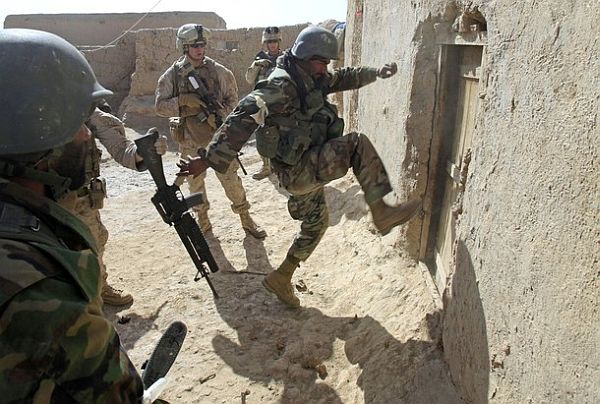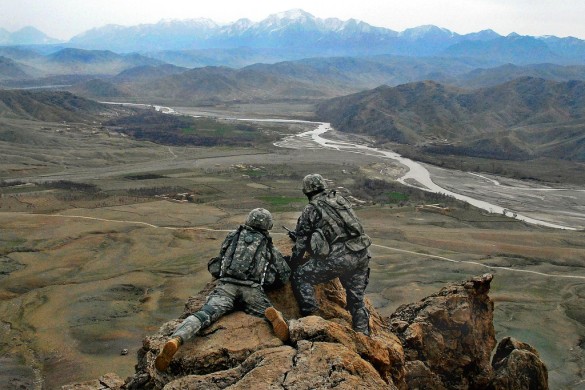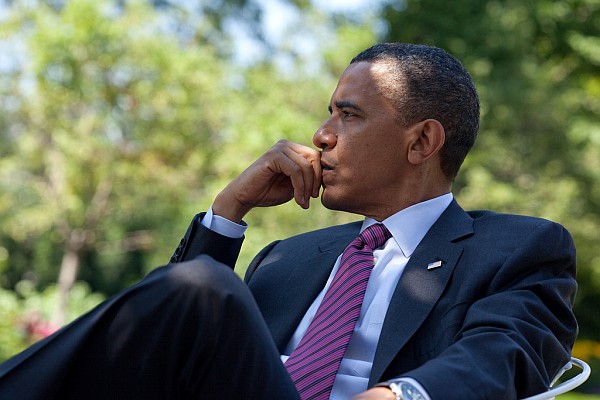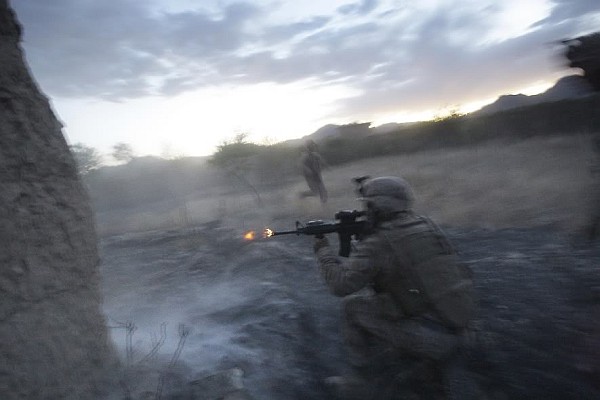“[T]he task of good journalism is to turn this raw material — who, when, where, how, how many — into something that emotionally engages people who can apply levers on decision-making,” said Wikileaks founder Julian Assange at a press conference in London on Monday.
And there’s the rub, since the war logs offer a resource from which an almost unlimited number of stories can be gleaned and to which a disproportionate amount of credibility will be attached for no other reason than that they are based on leaked intelligence reports.
Consider, for instance, one of the latest reports from Danger Room with the headline “WikiLeak: U.S. Battling Militants from Turkey, Its NATO Ally.”
Oh my god, it’s the Turks again! No wonder Israel was alarmed by the approach of the Turk-laden Mavi Marmara.
Spencer Ackerman has been studying reports indicating that Turkish fighters, supported by the al-Qaeda-aligned Haqqani network, may have operated out of militant safe havens in Pakistan.
U.S. troops at the Bermel base, part of Task Force Eagle — a team of five infantry companies and a cavalry troop operating in the area — began to notice in early May 2007 that Turkish fighters south of the base were scoping out how Pashtun insurgents conducted attacks against U.S. Army Blackhawk helicopters. On May 19, they struck, sending a 107-millimeter rocket into the base. No one was harmed, and an official assessment noted that the incident was amateurish: “fighters were having a difficult time coordinating and carrying out relatively routine actions leading up to an attack.”
But a military record that day noted something had changed. “Todays [sic] single rocket was the first involvement of Turkish fighters in directly attacking [coalition forces],” it reads, and went on to suspect that the incident was a test run for something more serious down the line.
That report proved to be prescient.
Thus unfolds a tale of a Turkish threat, looming from Pakistan but rooted in a Salafist-Wahhabist movement rising in Turkey — at least, that’s the impression you get from Ackerman’s only source of expert analysis.
“It’s a story that hasn’t been mainstreamed, this Turkish involvement in jihad,” says Bryan Glyn Williams, an associate professor of history at the University of Massachusetts-Dartmouth who’s studied Islamic militancy in Turkey, including Turkish extremist infiltration into Afghanistan. “There is a growing Salafist-Wahhabist movement in Turkey, a lot more extreme than the [ruling Isalmic-based] AK Party.”
Given that the AK Party isn’t extreme at all, that’s a strange contrast to draw.
How reliable a source is Williams? It’s hard to say, but he must have scored points at the CIA last month when he released a study claiming that drone strikes in Pakistan have been far more accurate than previously reported. He says that for every 22 militants killed, there was one civilian casualty. Contrast that with a report in Pakistan’s leading newspaper Dawn last year, which said for “each Al Qaeda and Taliban terrorist killed by US drones, 140 innocent Pakistanis also had to die. Over 90 per cent of those killed in the deadly missile strikes were civilians, claim authorities.”
How did Williams come up with such radically different numbers? The only dead he counted were those whose names were recorded — and note, the brief news reports on the results of drone attacks are not filled with copious detail.
Just in case anyone might think that the Turkish threat to Task Force Eagle in 2007 saw the end of Turkish militant infiltration to Afghanistan, Ackerman warns:
A different report from November 2009 details U.S. forces finding a trove of Turkish cash in a militant compound. (The amount of money isn’t detailed.)
That doesn’t surprise the University of Massachusetts’ Williams. He’s been going to Turkey since the 1990s and has been disturbed to see growing anti-Americanism and sympathy for terrorists on websites like Cihaderi, a phenomenon he says has grown by inches since the 1990s, when Turks went to fight on behalf of Islamic militants in Bosnia and Chechnya. Now, it’s being channeled through Deobandi mosques in tribal Pakistan, where radicalized Turks go as an entrance point “to take shots at Americans and even fellow Turks” fighting for the International Security Assistance Force in Afghanistan.
How significant is all of this? Who’s to say. If a contingent of 20 or 30 Turks have been fighting alongside the Taliban, might we not ask: so what?
Meanwhile, at The Guardian, Simon Tisdall digs out a story much more prosaic yet a narrative that conveys far more about the war:
Winning hearts and minds in Afghanistan can be uphill work, as US soldiers attached to Task Force Catamount discovered when they visited the remote village of Mamadi in Paktika province, near the Pakistan border.
“It seems to always be this way when we go there. No one wants anything to do with us,” the mission report’s author complained sadly. Nor does the Mamadi patrol’s experience appear to be untypical.
The report, circulated by US military intelligence in April 2007, is one of numerous accounts of attempted bridge-building contained in the classified war logs and examined by The Guardian. The material offers an unprecedented insight into the gaping cultural and societal gulfs encountered by US troops trying to win grassroots support for the west’s vision of a peaceful, developing, united Afghanistan.
The purpose of the Mamadi visit, reassuringly termed a “non-combat event”, was to meet local leaders and distribute food and other assistance. But things started badly when a Humvee broke down, the road turned muddy and the weather deteriorated. To be safe, half the patrol of 29 US servicemen plus Afghan army personnel stayed with the Humvee. The rest went on to Mamadi.
Their reception there is distinctly unenthusiastic. The children mostly stay indoors. The village elder is described as “a very disgruntled man” who does not want American handouts. “He personally blamed George Bush for his AK-47 being taken from him. He doesn’t want us to give stuff to his village because of fear from the enemy punishing him. He did say he would take the money, though,” the report said.
A talk with a 30-year-old male villager with black hair and “skinny” build is similarly uninspiring. “Not very outgoing, [he] sits on the edge of the conversation and just listens to what is going on.” It transpires that the man’s silence may be connected to his prior detention for “involvement with IEDs”. He was sacked by the Afghan army for the same offence.
After a curtailed stay, the patrol hands out 30 sweaters, 30 backpacks, 10 bags of beans and 10 bags of rice then departs. Back at base, the anonymous author reaches a surprising conclusion: “The mission in Mamadi was success.” But this seems to be largely because they fixed the Humvee. “The village of Mamadi is definitely anti-coalition. They want nothing to do with US or ANA [Afghan national army] forces. Nothing further to report.”



 “
“ Almost 40 years later, Wikileaks founder Julian Assange sees himself in the same role — with a difference. Assange seems to have become caught up in the mystique of whistleblowing and allowed the actors and the mechanism through which they reveal secrets to assume as much importance as the secrets themselves.
Almost 40 years later, Wikileaks founder Julian Assange sees himself in the same role — with a difference. Assange seems to have become caught up in the mystique of whistleblowing and allowed the actors and the mechanism through which they reveal secrets to assume as much importance as the secrets themselves. It would appear that Bradass87 is a 22-year old intelligence analyst, Private Bradley Manning. He was arrested on May 26 and was transferred today from Kuwait to Quantico, Virginia where he is in military custody and has been placed on
It would appear that Bradass87 is a 22-year old intelligence analyst, Private Bradley Manning. He was arrested on May 26 and was transferred today from Kuwait to Quantico, Virginia where he is in military custody and has been placed on 


